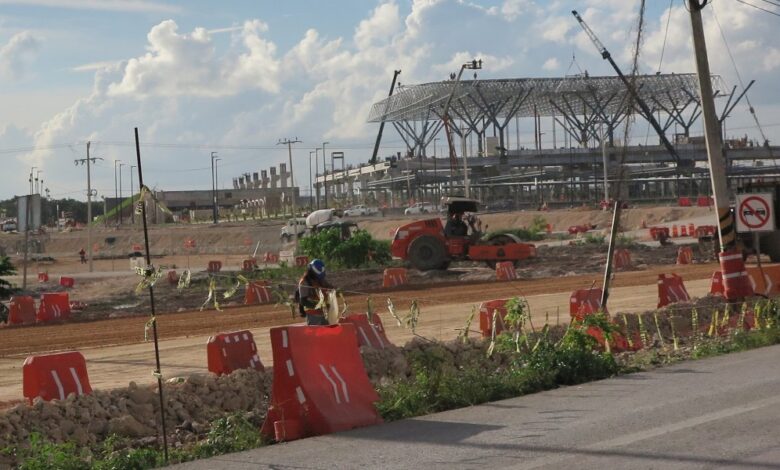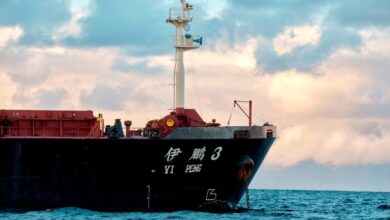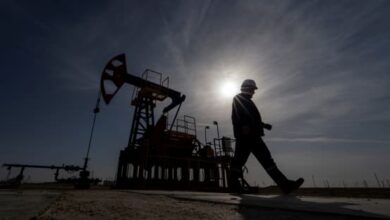Mexico’s Maya train could cost $30 billion and attract 5% of passengers


President Andrés Manuel López Obrador’s pet rail project, which could cost as much as $30 billion, is only half complete as he enters the final 2½ months of his term and is already causing problems. great damage to the environment.
But most of all condemnable judgments on the Maya Train tourist line, which runs around the Yucatan Peninsula, is the figure for passenger numbers on about half of the railway currently open: only about 1,200 people a day use the train, according to government figures released Monday.
Mostly only go on short trips between Merida and Cancun, or the nearby city of Campeche. The best hope of paying for the train’s enormous cost is that visitors will use it to depart from the resort town of Cancun and travel the entire 950-mile (1,500-kilometer) route to visit the Mayan archaeological sites scattered across the peninsula.
But a round-trip route from Cancun to the famous Mayan temple complex of Palenque attracted only about 100 passengers a day in each direction in its first six months of operation. That’s a volume that one or two buses a day could handle at a much cheaper cost.
The government initially promised the line would carry between 22,000 and 37,000 people a day. Current ridership is only around 3-5%, with three of the four most popular stations—Cancun, Merida, Palenque and Campeche—already in operation.
Admittedly, railway along the busy corridor connecting Cancun with the resorts of Playa del Carmen and Tulum—an area known as the Riviera Maya—is still unfinished and has just 17 trains in operation; that number could triple in the future.
But critics say there is little evidence that the Cancun-Tulum route will make the project profitable, because it do not run particularly close whatever resort town it is supposed to serve.
The Cancun-Tulum railway was originally supposed to run along a coastal highway where most of the hotels are located. But due to engineering difficulties, the government changed the route by cutting a 68-mile (110 km) section through the jungle and moving the track about 4½ miles (7 km) inland.
So instead of having to take the minibus that runs continuously on the coastal highway, tourists or resort staff will have to take a taxi to the train station, wait for one of the few daily trains, and then take another taxi to the resort when they reach their destination.
“The futility of this project is obvious,” said Jose “Pepe” Urbina, a local diver who opposes the trains because their steel pilings have damaged caves he has explored for decades. “The trains don’t really go anywhere that you couldn’t get to by highway before.”
“These are railway lines that do not provide any useful service to workers, students or for any everyday use,” Urbina said.
One thing the rail project has created is jobs: Manuel Merino, governor of the Gulf Coast state of Tabasco, says the Maya Line has created 20,000 direct or indirect jobs in his state and helped cut unemployment to 40%.
“This really makes it a driver for development in the south,” a poor and underdeveloped region of Mexico, Merino said. But most of those jobs will disappear once construction is complete, and federal officials are also looking for ways to try to pay for the railway themselves.
Officials have suggested that freight trains could also run on the track, but the area has little industry so the need for freight is limited.
It’s unclear whether the government ever thought the line would be profitable. López Obrador decided to build it before feasibility studies were done. According to a 2019 government study, the line would cost $8.5 billion and generate an estimated $10.5 billion in benefits.
But those “estimated benefits” always include many intangibles, like reduced highway traffic, faster travel, or increased tourism revenue, all of which are either not happening or unrelated to trains.
Moody’s chief analyst Alfredo Coutiño noted that cost overruns are common on such projects.
“As expected, the Maya ship project was not completed as planned and cost much more than the original budget,” writes Coutiño.
“The question that remains to be resolved is whether this project will be profitable in the medium term when it is expected to be fully operational, at full capacity and managed as a state agency rather than a private enterprise.”




